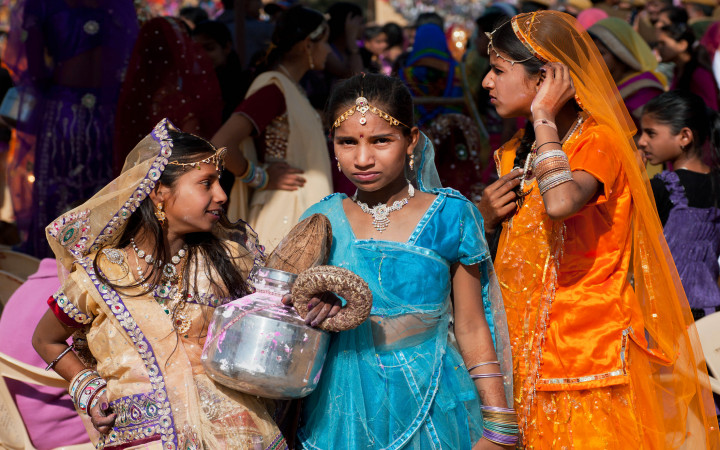Today’s Wonder of the Day was inspired by Fanta. Fanta Wonders, “What is a sari?” Thanks for WONDERing with us, Fanta!
Do you ever go clothes shopping with your family? Many kids do. It’s a great chance to express yourself through fashion. After all, there are so many types of clothing out there—and they can vary depending on where in the world you live.
Today’s Wonder of the Day is all about a type of traditional dress for people who live in many parts of Asia. It’s popular in India, Pakistan, Bangladesh, Sri Lanka, and Nepal. What are we talking about? The sari, of course!
What is a sari? Also called a saree, it’s a long, rectangular cut of cloth that may stretch from four to nine yards (3.5 to 8 meters) in length. The sari is wrapped and draped around the body to take a desired shape. Many types of fabric may be used to make a sari, but cotton and silk are two of the most common.
How long have people worn saris? The style reaches back around 5,000 years—all the way to the Indus Valley Civilization. In fact, it’s one of the oldest styles of clothing still worn today. Experts believe the word “sari” came from the Sanskrit word for “strip of cloth.”
Of course, the sari has evolved quite a bit over time. Influenced by several cultures and world events, modern saris are as varied as can be. In fact, there are over 100 ways to wrap the cloth.
As fashionable as they are, saris are about more than style. They’re also an important part of culture, especially in India and other parts of Asia. Some styles are more common in specific areas—in many cases, they’re as much a part of regional culture as food and language.
The sari also has a special place in many cultural holidays and events. For example, the wedding sari is traditional for brides. It often includes the color red but may come in a variety of different hues. Many people choose the colors in their sari depending on what they may symbolize in a specific culture or tradition.
Have you ever seen or worn a sari? If so, you know they can be very beautiful. In addition to color, many saris are decorated with intricate patterns. These are often sewn into the fabric with silk or another special thread. Some also come adorned with beads or even precious gems.
As saris can be wrapped and draped in many different styles, they’re also able to fit people of all shapes and sizes. For this reason, they are commonly passed down through families for many generations. For some families, it’s even traditional to make new saris together. Today, they’re also bought from clothing stores and designers.
What types of clothing are important in your culture? Whether it’s the sari, kimono, kilt, or something else, we’re sure you wear it proudly. After all, clothing is just one great way to celebrate your culture and heritage.
Standards: CCRA.R.4, CCRA.L.3, CCRA.L.6, CCRA.R.1, CCRA.R.2, NCAS.A.1, NCAS.A.2, NCAS.A.3, CCRA.W.3, CCRA.W.4, CCRA.W.9, CCRA.SL.2, CCRA.SL.1, CCRA.SL.3, CCRA.L.1




